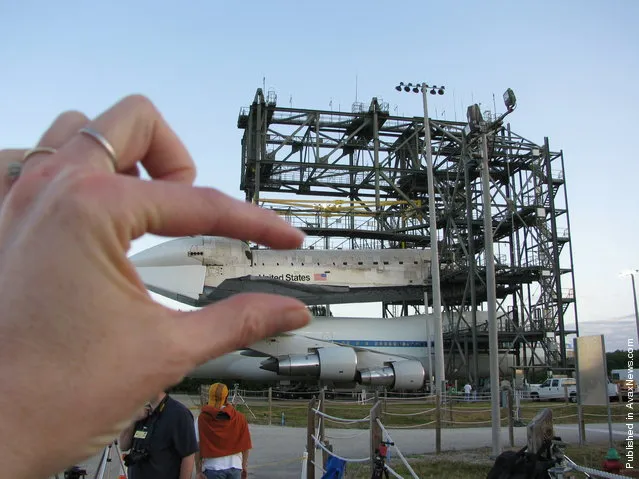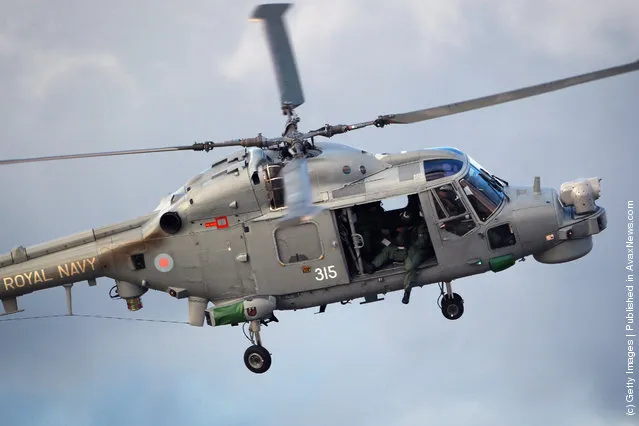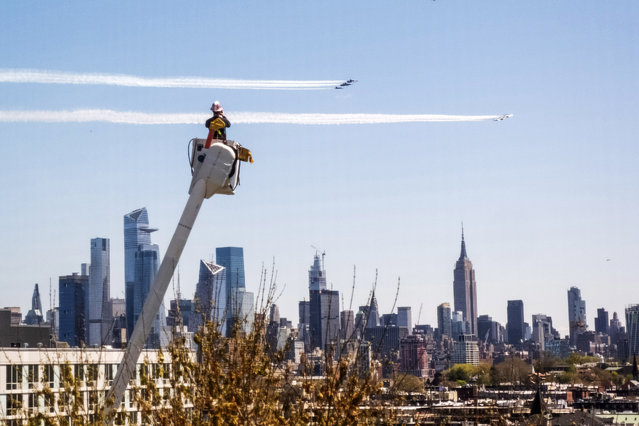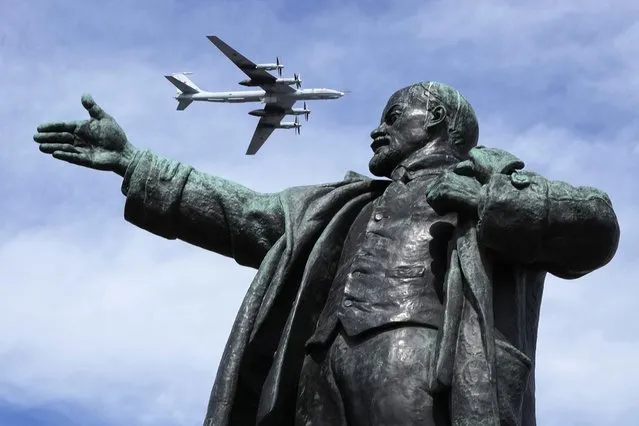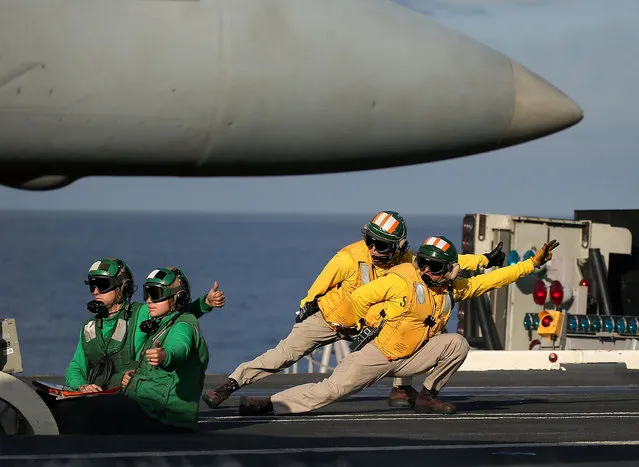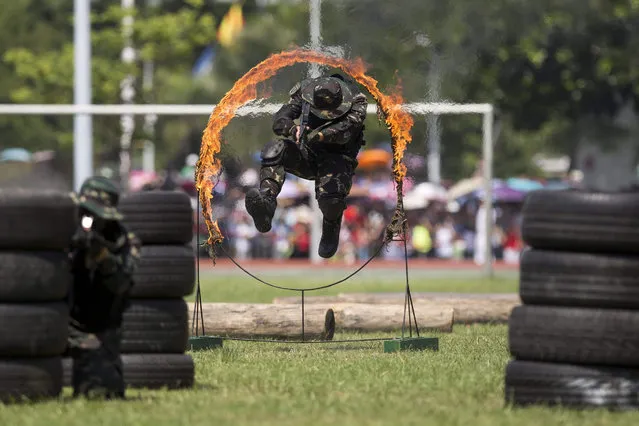
A People's Liberation Army (PLA) commando jumps through a fire hoop part of an exercise during an open day event at the Ngong Shuen Chau Barracks, the PLA navy base in the territory, in Hong Kong, China, 01 July 2015. Thousands of visitors attended the PLA open day yesterday and today to mark the 16th anniversary of the handover from British rule. (Photo by Jerome Favre/EPA)
02 Jul 2015 14:36:00,post received
0 comments


